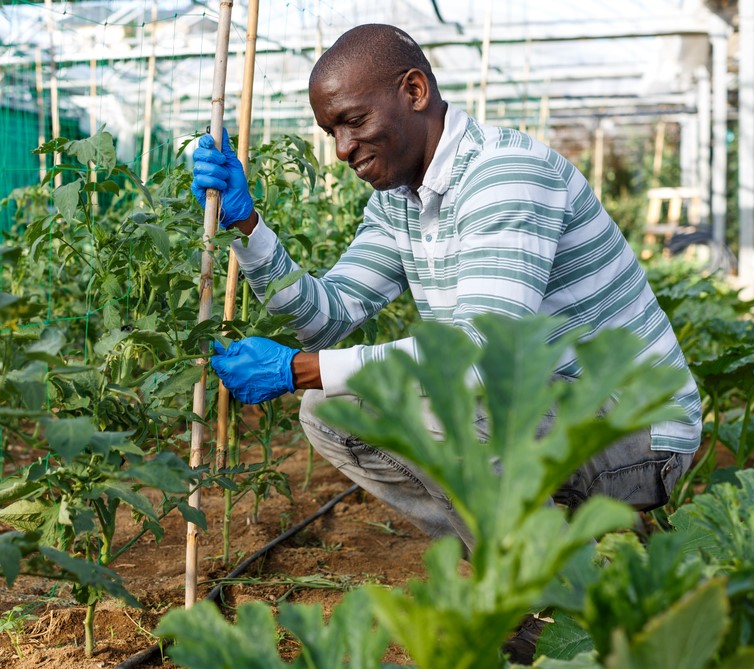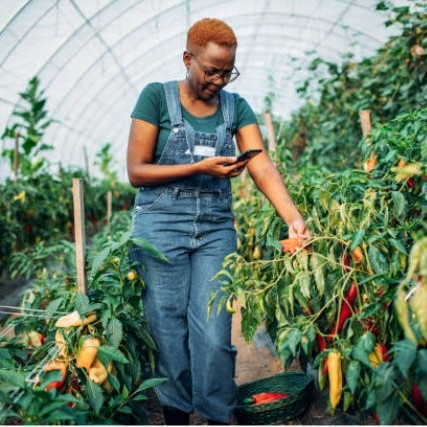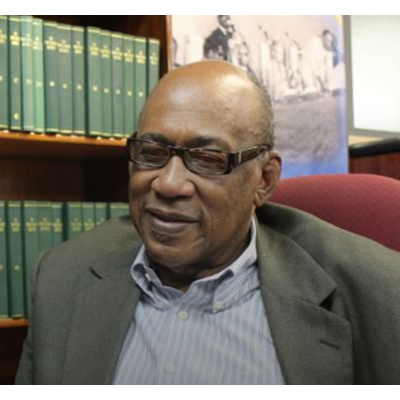In an April 2023 article by Terrence Blackman and Carolyn Walcott, “From Black Gold to Green Fields: The Promise of Guyana’s Oil Wealth in Supporting Agriculture”, the authors emphasized Guyana’s significant oil and as revenues with a projected extraction rate of 1.7 million barrels of oil per day by 2030 and how that could translate into an agricultural revolution for Guyana.
They identified agriculture’s critical input to minimising Guyana’s chances of experiencing the resource curse. Investments, with emphasis placed on small farmers, were recommended to catalyse farming practices and diversification. Small farmers are traditionally the dominant producers of domestic food requirements but have been historically “undermined by the privileging of the plantation sector”.
|
“The major challenges to small farmers, such as increased efficiency and productivity were restated as requiring: focused research and education; enhanced technology with special attention to climate change resilient systems; improved infrastructure, such as, farm to market roads and drainage and irrigation systems; enhanced support from strengthened institutions; and increased accessibility and availability of appropriate finance” |
In my own pieces from March 2022 to March 2023, I also advocated for the use of oil revenues to achieve such an outcome. In November 2022, this point was supported by Finance Minister Ashni Singh, who called for restructuring and modernising the agricultural and food sectors, emphasising the critical role of small farmers. Initiatives and/or actions within the four (economic, environmental, social and institutional) pillars of sustainable development were recommended to address key challenges that would have contributed to making “From Black Gold to Green Fields” a reality.
Agriculture is not always readily identified as a prime beneficiary of oil wealth. Consequently, returning agriculture to the “front burner” to facilitate conversion of “black gold to green fields” requires timely, planned and focused implementation of many discrete but interrelated activities by both public and private sectors.
My earliest piece established that significant quantities of reliable, safe and nutritious supplies of food are required by the offshore vessels (OSVs) involved in oil and gas activities plus the plethora of planned multi-starred hotels. This provides excellent opportunities for small and medium sized farmers to hone their technology, processes, and organisational skills. Small farmers were prioritised because:
- They are experienced in the production of commodities, such as, fruits, vegetables, meats, particularly poultry and pork, and eggs, that are primarily needed by the OSVs.
- In the November 2022 op-ed, Guyana is reported to have had an unfavourable Inequality Development Index and, in 2018, a poverty level of 48%: making it imperative to support businesses from the ground level up.
 Guyana’s Minister of Agriculture, Zulfikar Mustapha, stated in August 2021 that “small holder farmers are the key players in food security”, thus re-emphasising their importance.
Guyana’s Minister of Agriculture, Zulfikar Mustapha, stated in August 2021 that “small holder farmers are the key players in food security”, thus re-emphasising their importance.
However, both persons recognised that, for their efficiency, small farmers require empowerment through organisation, improved infrastructure, availability of relevant technology, institutional support and meaningful policies. This support is critical, as the OSVs require timely and reliable quantities of safe and nutritious foods at large scale.
The Government has called for supply locally sourced food for the OSVs—a step in the right direction—but challenges remain. Producers must be able to supply consistent quantities and qualities of food to large corporate operations. Even with a strong local content policy, few farmers in Guyana currently have experience providing the necessary level of logistics.
|
Small farmers must: be organised so as to improve their technical capacity; develop meaningful linkages with the established commercial sector in order to better understand other actors in the value chain; and be involved in programming for supplying the OSVs. They will then become meaningfully satisfied beneficiaries of the oil and gas sector. |
Well-managed, focused innovative and proactive research could result in sustainable production of commodities, including those produced by small farmers. Such research, contributing to improved social equity, must include:
- production and use of inputs derived from the petrochemical industry for primary and secondary production;
- commercial testing on innovative technologies including AI;
- policies that address constraints, such as, praedial larceny, to commercial production;
- programmes to ensure systems resilient to the more frequent and harsher climate change impacts; ensuring both quality and quantity of the owner and labour cadre.
The educational curricula, primary level upwards, must include Science, Technology, Engineering and Mathematics (STEM) disciplines to ensure the cadre of necessary skill base
The timely and successful implementation of these actions are critical to (a) enhancing quality of life of small farmers, and (b) ensuring viable management of the entire value chain, from input production to consumption of primary or processed product. Thus contributing to national sustainable development and a modernised and restructured sector.
Guyana, like most Small Island (and Low Lying) Developing States (SIDS), has experienced negative impacts (mainly floods and droughts) of more frequent and intense climate change events. This is particularly critical as 98% of Guyana’s population and economic activity reside on its low lying coastal and river areas. The author as well as the Government, in its Low Carbon Development Strategy (LCDS) 2030, has critically recognised that agriculture must attract special attention as its most socioeconomically important crops (sugar, rice, fruits, vegetables) and livestock (sheep, cattle and poultry) reside in these areas.
The Government, for the public good, must construct sea and river defences, repair existing coastal infrastructure and expand water management facilities. Both Government and farmers must adopt/modify mitigation and adaptation measures to enhance sustainable production within resilient systems. Additional measures that prioritise natural coastal defences, like maintaining healthy mangrove ecosystems, should be given priority.
The institutional challenge, the most recently identified pillar of sustainable development, was described in November 2022 as “the glue that binds the other pillars”. Lack of properly designed and/or structured institutions, coupled with inadequate human resource capacity, has been established as a major potential cause of the resource curse for “new” wealthy oil and gas nations. Signs have been positive thus far but investing in strong institutions, guided by international best practices, will continue to be vital.
 There are many additional ongoing activities in Guyana’s agricultural sector. These are a) geospatial, with the initiation/expansion of commercial production in non-coastal areas, for example, the Intermediate Savannahs (corn and soybeans) and the Pakaraimas (vegetables and onions); b) expansion of commercial production of, for example, sheep (black belly) and inland fisheries; c) intensification of “youth friendly” technology and practices (shade house production); and d) consequently, intensification and expansion of policy, education, research, extension and administrative activities.
There are many additional ongoing activities in Guyana’s agricultural sector. These are a) geospatial, with the initiation/expansion of commercial production in non-coastal areas, for example, the Intermediate Savannahs (corn and soybeans) and the Pakaraimas (vegetables and onions); b) expansion of commercial production of, for example, sheep (black belly) and inland fisheries; c) intensification of “youth friendly” technology and practices (shade house production); and d) consequently, intensification and expansion of policy, education, research, extension and administrative activities.
Institutional reorganisation, refocusing and retooling require significant “engine room” activities, with results not generally public knowledge. It’s anticipated that such activity is ongoing.
The final challenge is appropriate (available and accessible) finance to conduct the activities necessary to make agriculture, with climate resilient systems, a key economic driver, if and when the world begins its eventual transition away from oil and gas dependency.
International agencies and/or developed countries have not committed to provide funds required to develop climate resilient agricultural systems. For example, at COP27, no indelible pledges were made to meet the US$100 billion grant funds needed annually by developing countries for mitigation and adaptation practices to address negative impacts of climate change. Identifying this grant financing inadequacy, developing countries must provide, from their own treasuries, the funding needed.
Recognising this dilemma, the USA in December, 2022 promised to support SIDS with grant funds. Within CARICOM, Barbados accessed a loan from the International Monetary Fund, through its new Resilience and Sustainability Facility, to support the country’s adaptation and mitigation programmes.
Fortunately, Guyana, based on its estimated recoverable 11 billion barrels of oil-equivalent, will have finances to implement activities, previously described as being for the public good. Unfortunately, with the possible exception of Suriname and Trinidad and Tobago, other CARICOM nations will not have such funds. Guyana, for extensively documented reasons, cannot endure mass illegal intra-regional migration. Perhaps, in recognition of this, Barbados’ PM, Mia Mottley, has premised that oil and gas windfall is “necessary to uplift Caribbean people”.
Guyana needs to seriously consider establishing a Fund to support sustainable development objectives across CARICOM member states. This could work within or alongside the already-successful Natural Resource Fund as a vehicle for making smart investments that would also benefit the broader region, similar to the Petroleum Fund that Trinidad and Tobago established during its oil and gas “heyday” and from which many regional development initiatives benefited.
Commercial production is being conducted by primarily small farmers. Historically, this group has experienced major difficulties in accessing funds which may be available from commercial financial institutions. Grants are required in the interim for specific activities. The oil companies, that are enjoying tremendous revenues, have been identified as such a source to supplement that being provided by regional governments, particularly Guyana and Trinidad and Tobago.
With the United Nations reporting global hunger at 821 million (10% global population) and China allegedly targeting USA food reserves, and reported growing regional food insecurity, it’s imperative for Guyana and, by extension CARICOM, to make “Black Gold to Green Fields” a reality. However, for this objective not to succumb to the ever-present Implementation deficit, focused programmes, projects and appropriate supportive policies, which must be regularly monitored and evaluated, should be conceptualised and implemented. This initiative must be guided by Martin Luther King’s the “Urgency of Now”.
 Dr. H. Arlington Chesney is a leading Caribbean Agricultural professional who has served his country, the Caribbean and the hemisphere. He is a former Executive Director of the Caribbean Agricultural Research and Development Institute. He is a Professional Emeritus of the Inter-American Institute for Cooperation on Agriculture and, in 2011, was awarded Guyana’s Golden Arrow of Achievement for his contribution to agricultural development in Guyana and the Caribbean.
Dr. H. Arlington Chesney is a leading Caribbean Agricultural professional who has served his country, the Caribbean and the hemisphere. He is a former Executive Director of the Caribbean Agricultural Research and Development Institute. He is a Professional Emeritus of the Inter-American Institute for Cooperation on Agriculture and, in 2011, was awarded Guyana’s Golden Arrow of Achievement for his contribution to agricultural development in Guyana and the Caribbean.
Note: This article appeared first at https://oilnow.gy/featured/making-from-black-gold-to-green-fields-a-reality/
The opinions expressed in this article are the responsibility of the author and do not necessarily reflect the opinion of IICA.
|
If you have questions or suggestions for improving the BlogIICA, please write to the editors: Joaquín Arias and Eugenia Salazar. |
Add new comment